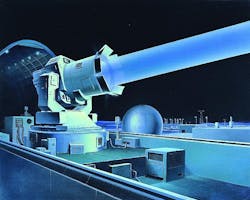Pentagon's newfound cash should focus on enabling technologies for tomorrow's conflicts
-- How is the Pentagon going to spend all that money?
-- How can military leaders transform money into meaningful readiness?
-- What might be the disruptive new technologies that the DOD's sudden new wealth should help promote most aggressively?
-- Can we trust the U.S. military industrial complex, which already is notorious for wasting vast amount of money, to husband this newfound wealth wisely?
There are big risks with sudden wealth; we've all seen the stories of professional athletes and multi-million-dollar lottery winners who, overtaken by excitement, waste their money on flashy cars, big houses, yachts, and jewelry. In a few years they end up right back in poverty where they started.
The DOD isn't immune to this phenomenon. It's been a long time since I've seen this kind of excitement in government and in the defense industry. Folks think we're back to the Reagan military build-up of the early 1980s, or to the money-is-no-object days of post-911. That kind of attitude could lead us in the wrong direction.
Experience shows us that the Pentagon's money spigot won't flow full-blast forever. It might not even last longer than a few years, so today's military leaders must plan now for the long term. Defense spending is a huge chunk of money, and remains a favorite target of political factions that would like to see the money spent elsewhere. So, what can we do now to make the most of this windfall?
Some of the most important agenda items already are in progress. Take laser weapons, for example, which will be crucial for deterrence and national security enforcement as we move further into the 21st century. Laser weapons don't run out of bullets, will be difficult to overwhelm with numbers, and should be reasonably effective against advanced enemy munitions like mortars, rockets, and perhaps even hypersonic missiles.
Still there are plenty of challenges to laser weapons that must be overcome, and this is where all this extra money in the defense budget could be put to best use. Laser power must be increased to avoid the necessity of keeping the laser beam on target for more than a few seconds. Lasers must be powerful enough to destroy targets in a second or less, and then move quickly on to the next target.
Although laser weapons don't run out of bullets, they will have voracious appetites for electrical power. That's why some of the Pentagon's new-found wealth should go for advanced energy-generation and energy-storage technologies to fuel future generations of laser weapons. There are other enabling technologies, as well.
Related: DARPA adds two companies to OFFSET swarm unmanned reconnaissance drone research project
People talk about the importance of stealth aircraft technology for tomorrow's military, yet just as important is advanced and secure tactical networking that will enable stealthy aircraft to find targets quickly, and then fire weapons from remote platforms. Think the F-35 fighter-bomber firing weapons remotely from a stand-off B-52 bomber.
New kinds of electronic warfare (EW) will be necessary in the future not just to jam enemy sensors and communications, but also to spoof them into detecting targets that aren't there, and encourage them to eavesdrop on communications with false and misleading information. Fast optical processing likely will be a key enabling technology, among many others.
New surveillance and reconnaissance technologies will be necessary to help keep U.S. and allied forces inside of the enemy's decision loop. Key to tomorrow's surveillance and reconnaissance capabilities will be a new breed of swarming unmanned aerial vehicles (UAVs) that can be deployed surreptitiously from covert platforms like submarines. The list goes on.
Military leaders need to think now about long-term investments in enabling technologies before the money stream dries up, as it inevitably will. We shouldn't squander this golden opportunity to align our military forces for tomorrow's conflicts.
Ready to make a purchase? Search the Military & Aerospace Electronics Buyer's Guide for companies, new products, press releases, and videos
